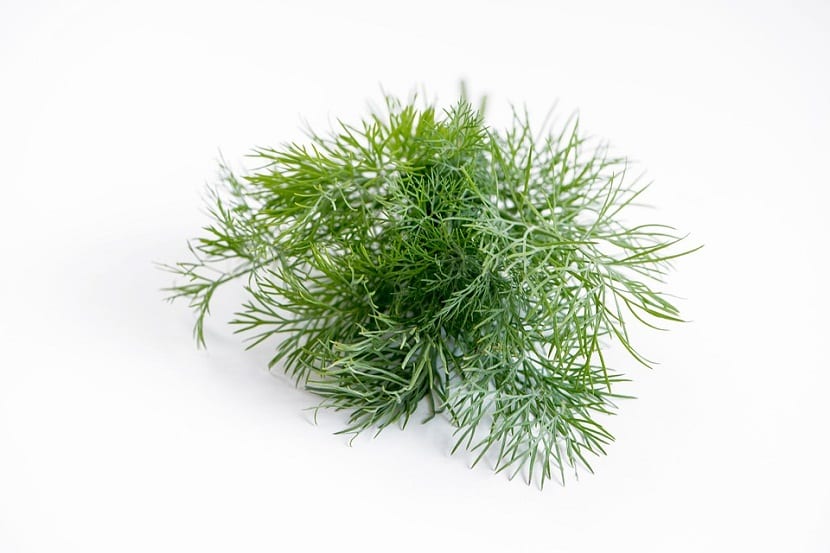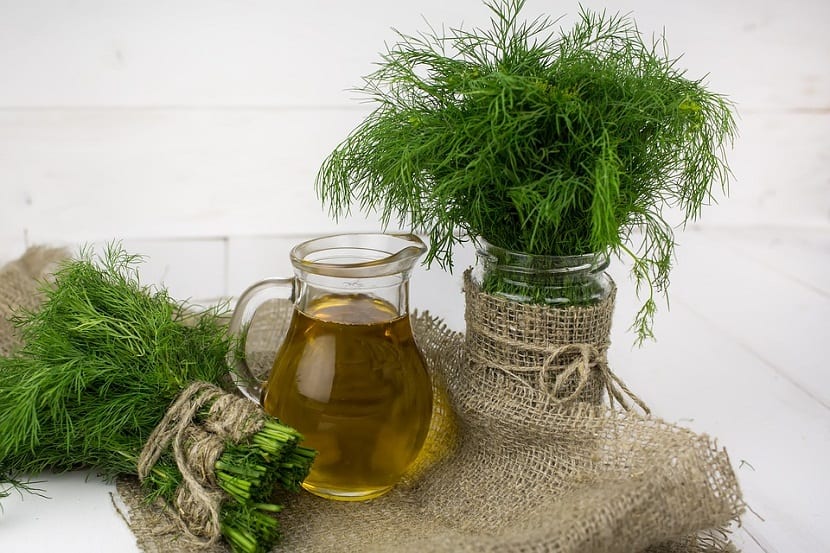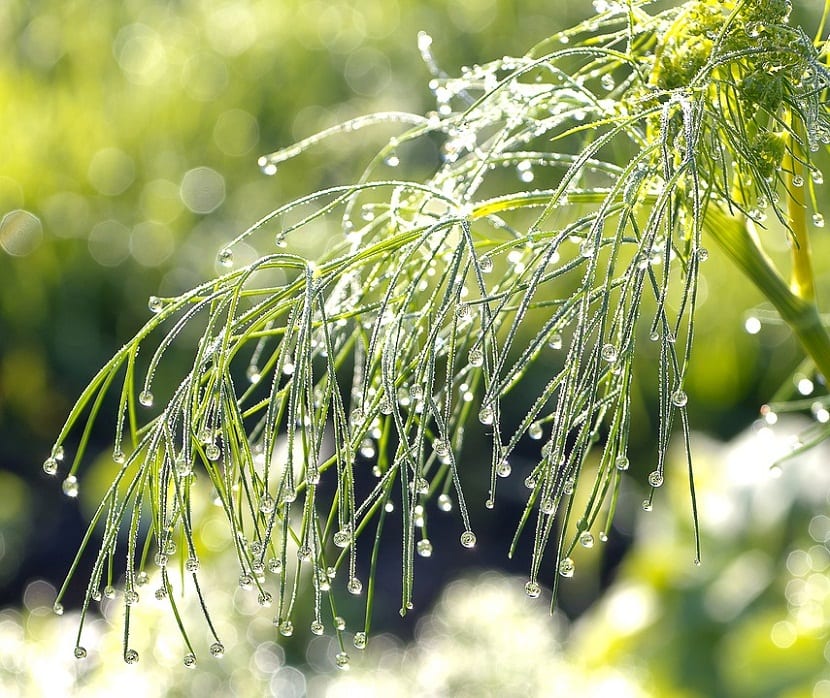
The scientific name dill Anethum graveolens, is a plant that belongs to the opiate family. This is the only species belonging to the genus Anethum and has its origin in the countries of the southwest as well as in the central countries of Asia.
Dill characteristics

We know dill as a herbaceous plant which is grown annually, has a measurement that is between 25 and 50 centimeters in height, despite the fact that the branched stems that this plant has can reach a meter.
The root of it is weak, axomorphic and long as well as subtle. Its stem is quite thin, with alternate branches that do not have thorns and are smooth.
Dill is green in color. His branching is tip-shaped It is capable of supporting a large number of flat umbels that have yellow flowers for the summer months.
Dill flowers they have five yellow petals that are whole, elongated and suborbicular, with an apex that curves towards the inside. They have two styles as well as sepals and this is a plant that does not have a calyx.
The leaves that this plant has are quite thin, very similar to feathers, which have a dark green color. They are expired Likewise, they are finely divided into lacinias that are filiform, although most of them are linear and caulinar, which are arranged alternately, without stipules and also not glabrous.
The fruits it produces have a elliptical oval shape that can measure about 4 to 6 mm, which are dark brown in color and the lateral coasts are widened, with two wings that are narrow as well as pale. Dill seeds are flat, oval-shaped and off-white in color that have a flavor that is a bit bitter.
Dill care
According to studies that have been carried out in the fields, they have been able to demonstrate the shape as well as the quality of the harvest that can be had from dill, regardless of whether it is in order to simply obtain the leaves or also the seeds, it becomes quite dependent taking into account the date on which we sow the plant.
So the plants that have been sown previously have a more suitable development for cultivation and a collection at the end of the vegetative cycle, that is why these come to have a better performance.

If we have used a seedbed to be able to grow dillWe must transplant to the pots or to the garden when the plants have already been able to reach about four cotyledons.
Dill for being a plant with a lot of aroma with essential oils that possess properties that are inhibitoryIt has the ability to resist pests as well as diseases very well. However, this is a plant that has a greater probability of having pests such as Alternaria sp.
One of the practices that we can carry out to prevent this class of pathogens is cover each of the seeds with a fungicide either organic or inorganic. In this same way, it is of great importance that we can combat the mollusks found on earth as early as possible, such as snails as well as slugs, because these small animals can eventually reach be quite a significant problem for plants that are much younger.
Dill harvesting usually begins in about 8-10 weeks. If we are going to use the leaves for a home remedy we have to harvest them when the plant is in bloom, since it has a high concentration of essential oils.
Hello, my name is Dilia Hernandez, I love nature, flowers and research in medicinal and aromatic plants, among others.